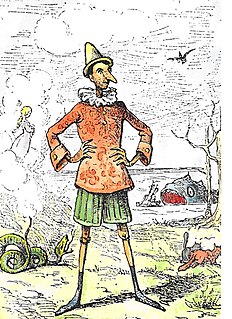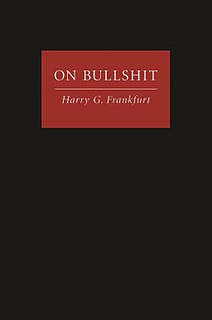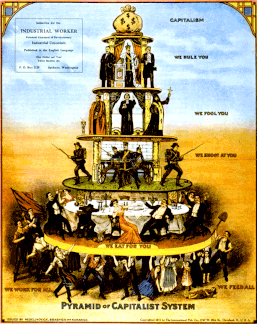Related Research Articles

A polygraph, popularly referred to as a lie detector test, is a device or procedure that measures and records several physiological indicators such as blood pressure, pulse, respiration, and skin conductivity while a person is asked and answers a series of questions. The belief underpinning the use of the polygraph is that deceptive answers will produce physiological responses that can be differentiated from those associated with non-deceptive answers. There are, however, no specific physiological reactions associated with lying, making it difficult to identify factors that separate liars from truth tellers. Polygraph examiners also prefer to use their own individual scoring method, as opposed to computerized techniques, as they may more easily defend their own evaluations.
Deception or ‘’’falsehood’’’ is an act or statement which misleads, hides the truth, or promotes a belief, concept, or idea that is not true. It is often done for personal gain or advantage. Deception can involve dissimulation, propaganda and sleight of hand as well as distraction, camouflage or concealment. There is also self-deception, as in bad faith. It can also be called, with varying subjective implications, beguilement, deceit, bluff, mystification, ruse, or subterfuge.

Interrogation is interviewing as commonly employed by law enforcement officers, military personnel, and intelligence agencies with the goal of eliciting useful information. Interrogation may involve a diverse array of techniques, ranging from developing a rapport with the subject to torture.

A lie is an assertion that is believed to be false, typically used with the purpose of deceiving someone. The practice of communicating lies is called lying. A person who communicates a lie may be termed a liar. Lies may serve a variety of instrumental, interpersonal, or psychological functions for the individuals who use them. Generally, the term "lie" carries a negative connotation, and depending on the context a person who communicates a lie may be subject to social, legal, religious, or criminal sanctions.
The Barnum effect, also called the Forer effect, or less commonly, the Barnum–Forer effect, is a common psychological phenomenon whereby individuals give high accuracy ratings to descriptions of their personality that supposedly are tailored specifically to them, yet which are in fact vague and general enough to apply to a wide range of people. This effect can provide a partial explanation for the widespread acceptance of some paranormal beliefs and practices, such as astrology, fortune telling, aura reading, and some types of personality tests.

Response bias is a general term for a wide range of tendencies for participants to respond inaccurately or falsely to questions. These biases are prevalent in research involving participant self-report, such as structured interviews or surveys. Response biases can have a large impact on the validity of questionnaires or surveys.
The cognitive walkthrough method is a usability inspection method used to identify usability issues in interactive systems, focusing on how easy it is for new users to accomplish tasks with the system. Cognitive walkthrough is task-specific, whereas heuristic evaluation takes a holistic view to catch problems not caught by this and other usability inspection methods. The method is rooted in the notion that users typically prefer to learn a system by using it to accomplish tasks, rather than, for example, studying a manual. The method is prized for its ability to generate results quickly with low cost, especially when compared to usability testing, as well as the ability to apply the method early in the design phases before coding even begins.
Metacognition is "cognition about cognition", "thinking about thinking", "knowing about knowing", becoming "aware of one's awareness" and higher-order thinking skills. The term comes from the root word meta, meaning "beyond", or "on top of". Metacognition can take many forms; it includes knowledge about when and how to use particular strategies for learning or problem-solving. There are generally two components of metacognition: (1) knowledge about cognition and (2) regulation of cognition.

On Bullshit is a 2005 book by philosopher Harry G. Frankfurt which presents a theory of bullshit that defines the concept and analyzes the applications of bullshit in the context of communication. Frankfurt determines that bullshit is speech intended to persuade without regard for truth. The liar cares about the truth and attempts to hide it; the bullshitter doesn't care if what they say is true or false, but rather only cares whether their listener is persuaded. Frankfurt's philosophical analysis of bullshit has been analysed, criticised and adopted by academics since its publication.
Mental chronometry is the study of reaction time in perceptual-motor tasks to infer the content, duration, and temporal sequencing of mental operations. Mental chronometry is one of the core methodological paradigms of human experimental and cognitive psychology, but is also commonly analyzed in psychophysiology, cognitive neuroscience, and behavioral neuroscience to help elucidate the biological mechanisms underlying perception, attention, and decision-making across species.
Lie detection is an assessment of a verbal statement with the goal to reveal a possible intentional deceit. Lie detection may refer to a cognitive process of detecting deception by evaluating message content as well as non-verbal cues. It also may refer to questioning techniques used along with technology that record physiological functions to ascertain truth and falsehood in response. The latter is commonly used by law enforcement in the United States, but rarely in other countries because it is based on pseudoscience.
The Hardest Logic Puzzle Ever is a logic puzzle so called by American philosopher and logician George Boolos and published in The Harvard Review of Philosophy in 1996. Boolos' article includes multiple ways of solving the problem. A translation in Italian was published earlier in the newspaper La Repubblica, under the title L'indovinello più difficile del mondo.

A number of propaganda techniques based on social psychological research are used to generate propaganda. Many of these same techniques can be classified as logical fallacies, since propagandists use arguments that, while sometimes convincing, are not necessarily valid.
Statement analysis, also called scientific content analysis (SCAN), is a technique for analyzing the words people use to try to determine if what they said is accurate. Proponents claim this technique can be used to detect concealed information, missing information, and whether the information that person has provided is true or false.
The Wizards Project was a research project at the University of California, San Francisco led by Paul Ekman and Maureen O'Sullivan that studied the ability of people to detect lies. The experts identified in their study were called "Truth Wizards". O'Sullivan spent more than 20 years studying the science of lying and deceit. The project was originally named the Diogenes Project, after Diogenes of Sinope, the Greek philosopher who would look into people's faces using a lamp, claiming to be looking for an honest man.
Non-verbal leakage is a form of non-verbal behavior that occurs when a person verbalizes one thing, but their body language indicates another, common forms of which include facial movements and hand-to-face gestures. The term "non-verbal leakage" got its origin in literature in 1968, leading to many subsequent studies on the topic throughout the 1970s, with related studies continuing today.
Othello error occurs when a suspicious observer discounts cues of truthfulness. Essentially the Othello error occurs, Paul Ekman states, "when the lie catcher fails to consider that a truthful person who is under stress may appear to be lying" their non-verbal signals expressing their worry at the possibility of being disbelieved. A lie-detector or polygraph may be deceived in the same way, by misinterpreting nervous signals from a truthful person. The error is named after William Shakespeare's tragic play Othello; the dynamics between the two main characters, Othello and Desdemona, are a particularly well-known example of the error in practice.
Counterpropaganda is a form of communication consisting of methods taken and messages relayed to oppose propaganda which seeks to influence action or perspectives among a targeted audience. It is closely connected to propaganda as the two often employ the same methods to broadcast methods to a targeted audience. Counterpropaganda differs from propaganda as it is defensive and responsive to identified propaganda. Additionally, counterpropaganda consists of several elements that further distinguish it from propaganda and ensure its effectiveness in opposing propaganda messages.
Child lying refers to children displaying varying degrees of deceptive behavior in a social situation. Children have been observed lying as early as age 2 and their deceptive skills increase sharply as they mature into adolescence. Children who have advanced cognitive skills for their age have an increased tendency to begin lying at earlier ages. Children may lie for various reasons including, but not limited to, escaping punishment for not obeying a task, through observation of their parents and peers, or lacking a comprehensive understanding of basic morality.
Truth-default theory (TDT) is a communication theory which predicts and explains the use of veracity and deception detection in humans. It was developed upon the discovery of the veracity effect - whereby the proportion of truths versus lies presented in a judgment study on deception will drive accuracy rates. This theory gets its name from its central idea which is the truth-default state. This idea suggests that people presume others to be honest because they either don't think of deception as a possibility during communicating or because there is insufficient evidence lending them unable to prove they are being deceived. Emotions, arousal, strategic self-presentation, and cognitive effort are nonverbal behaviors that one might find in deception detection. Ultimately this theory predicts that speakers and listeners will default to use the truth to achieve their communicative goals. However, if the truth presents a problem, then deception will surface as a viable option for goal attainment.
References
- Gregg, A. P. (2007). "When vying reveals lying: The Timed Antagonistic Response Alethiometer". Applied Cognitive Psychology. 21 (5): 621–647. doi:10.1002/acp.1298.